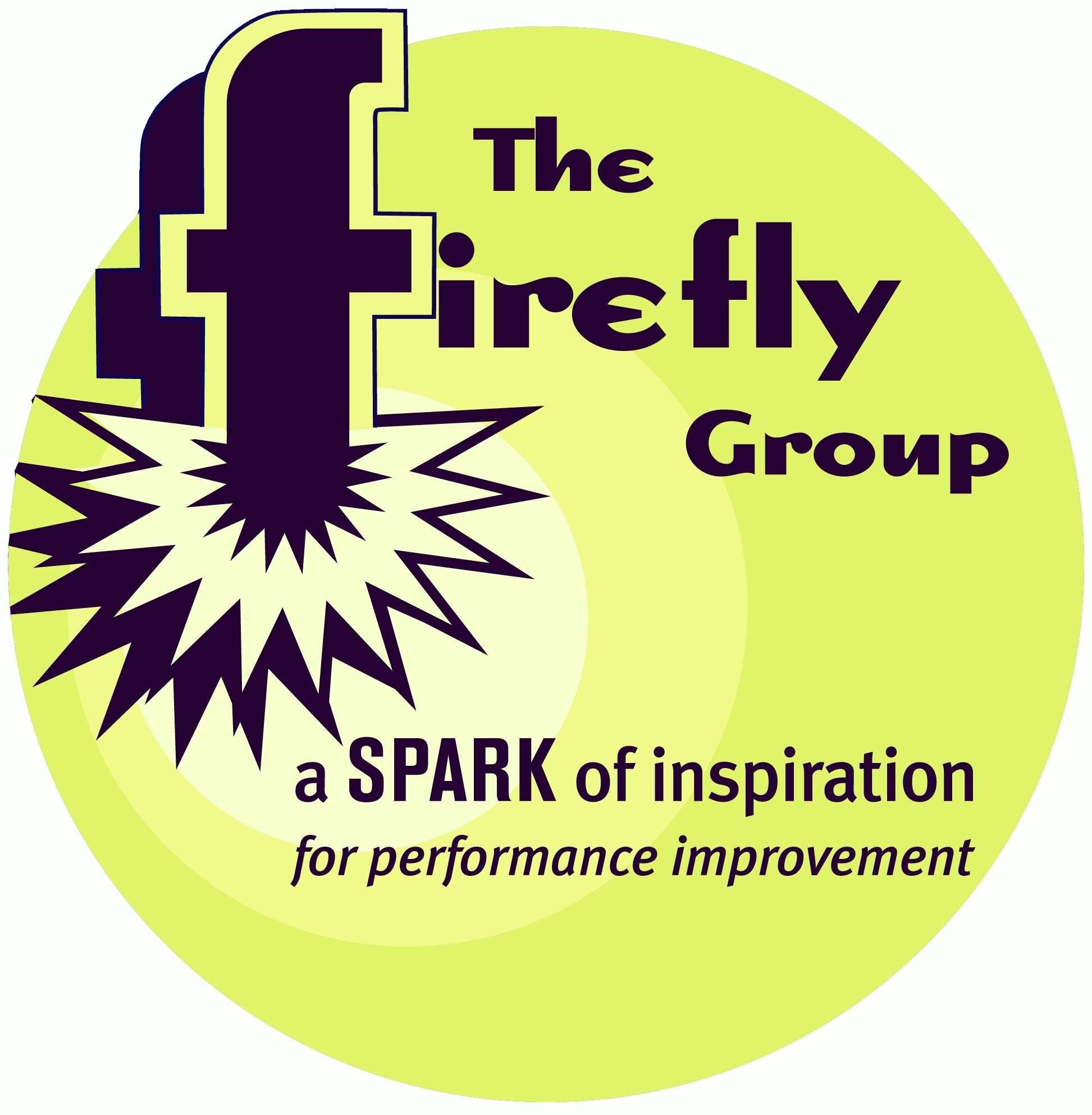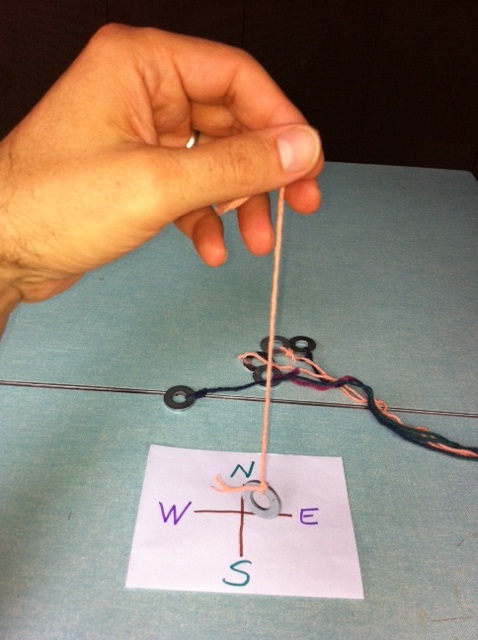

Of Note...
Brian Remer Receives Award for Lifetime Achievement. Read about it here:
What We Do
The Firefly Group helps people connect their every-day tasks with a bigger, wider sense of purpose and meaning. After working with Firefly, people are energized to attain the mission of their organization and they have a specific action plan to help them achieve their goals.
We do this through leadership development, performance improvement training, strategic planning, and clarification of organizational mission and vision. Our methods are engaging, thought-filled, and results-oriented.
 If
this sounds like a good direction for your organization, let's talk about
how we might collaborate! Please give me a call (802.257.7247) or send an
. - Brian
If
this sounds like a good direction for your organization, let's talk about
how we might collaborate! Please give me a call (802.257.7247) or send an
. - Brian
Where Can You Catch The Firefly Group?
National
Association of State Judicial Educators (NASJE),
Boston
August 8
Keynote Presentation
Vermont Health Educators' Conference
Montpelier, VT
August 16
Full-Day Workshop
North
American Simulation & Gaming Association (NASAGA),
Columbus
November 7 - 10
Keynote
Presentation,
Game Design Certificate Program Leader
 Your ETR (Estimated Time to Read): 10 minutes Your ETII (Estimated Time to Implement Ideas): 5 weeks |
Special Events:
Thiagi in New York City
Sivasailam "Thiagi" Thiagarajan will present "Interactive Techniques for Instructor-Led Training " on October 30, 2012. In the morning session of this two-part workshop, you will learn how to design a variety of effective and engaging training activities. In the afternoon, you will learn how to conduct these activities to ensure the recall and application of new skill and knowledge. Click HERE to read the brochure. To register for this one-day event visit thiagi.com .
NASAGA's 50th Anniversary Conference in Columbus, OH
Register now for the next conference of the North American Simulation and Gaming Association November 7 - 10, 2012. NASAGA is the best kept secret resource for all trainers interested in interactive learning.Spend quality time with leading practitioners in an intimate setting. Every session is hands-on; no big boring sessions listening to powerpoint presentations in dark auditoriums. This will be a very special conference that celebrates 50 years of simulations and games for learning. 24 breakout sessions, three keynotes, two game night accctivities, and one amazing alternate reality experience.
Early bird registration ends August 4 and you can save an additional $10 when you sign up through PayPal!
August 2012
|
Say
It Quick |
Discoveries bits of serendipity to inspire and motivate |
Ideas fuel for your own continuous learning |
Activities tips and tricks you can try today |
| Who Knew? | Creatures Of Light | Your Inner Light |
A visit to the American Museum of Natural History in New York City shines a light on some important considerations for learning. But first let's set the stage with this 99-Word Story.
Who Knew?
At three and a half, my daughter was a pacifier junkie. She only popped it in her mouth after daycare, yet no amount of encouragement could induce her to kick the habit.One day, my wife and I were discussing a report that the chemical softener in pacifiers could be carcinogenic. Our daughter interrupted to ask what we were talking about. We explained, in simple terms, that her pacifier might be dangerous for her long-term health. Without a word, she took it out of her mouth. Cold turkey.
We never really know how much a person comprehends!
Creatures
of Light
Nature's Bioluminescence
American
Museum of Natural History
A recent trip to the American Museum of Natural History in New York City was a fun opportunity to learn more about the phenomenon of bioluminescence which has been a curiosity of mine since childhood.
Bioluminescence is the production of light by living organisms. It can be found in some plants and mushrooms as well as insects like glow worms and, of course, fireflies. In the ocean, anglerfish, coral, jelly fish, and microorganisms can create their own light. At the greatest ocean depths, nearly all animals are bioluminescent. No matter where these animals are found, their light-producing ability is used to attract mates, to confuse predators, or to lure food into a toothy trap.
Bioluminescence is incredibly efficient. In contrast to incandescent light which releases 90% of its energy as heat, bioluminescence is 100% light. As a result, fireflies and similar animals can produce light completely out of proportion to their size and energy expenditure. This light is the result of a reaction between the chemical luciferin (a pigment) and luciferase (an enzyme). With oxygen acting as a catalyst, the luciferin molecule actually fits into the luciferase resulting in a burst of light. How the organism controls this process to produce the desired flashing signals is still a question for discovery.
In the meantime, scientists have been using the properties of bioluminescence to conduct noninvasive research into the spread of infectious diseases and the growth of cancer cells. In addition, bioluminescence can be used to study the effectiveness of drugs that are designed to cut off the blood supply to cancer cells. All this research is accomplished by injecting cancer cells or stem cells with luciferin then following its light to track the drug's effects.
The study of bioluminescence demonstrates how discoveries in nature can spark creative solutions in unexpected situations.
 Light
for Learning
Light
for Learning
What is the connection between bioluminescence and learning?
Learning and knowledge are often symbolized by a lamp emitting light to reveal the truth. In contrast, we often equate ignorance with darkness - the inability to see and understand the world around us.
But we don't gain knowledge by having an expert hand us a flash light. Each of us decides whether to turn that light on and which dark corner to point it toward. No matter how expert our teacher, no one but the learner holding the light can determine what to do with it. Each person makes internal decisions about whether, where, when, and how to use what they learn.
This is where bioluminescence is a helpful metaphor. Everyone has the inner capacity (the pigmentation luciferin) for learning. Add knowledge (the enzyme luciferase) presented by an engaging teacher (the oxygen catalyst), and you can ignite learning and new action. The 99-Word Story suggests that this process is evident even in very young children. Frankly, I have no idea how my daughter gained her inner capacity, her luciferin, but when given new information in the presence of people who cared for her, she was able to profoundly change her behavior.
Real learning results in changed behavior. This happens by tapping into the internal motivation of learners. When teachers help people make connections between the subject being taught and a sense of purpose or desire for meaning, the light in people's eyes will flicker into brilliance. As with bioluminescent sea life, the deeper you challenge people to go in their thinking the more likely you are to find that internal light.
Educators who do all the talking, especially by lecturing, are probably creating more heat than light. They do not ask their students to invest any internal energy or challenge them to change long-standing behaviors. However, by inspiring students to interact with the material on their own, these educators could become more efficient.
Whether you are a teacher, trainer, facilitator, manager, coach, mentor, leader, or parent, you have many opportunities to be a catalyst bringing a breath of fresh oxygen to ignite change in the lives of other people.
Making more light; less heat. That's what we do at The Firefly Group. If that's what you do too, please !
 Your
Inner Light
Your
Inner Light
As the
99-Word Story for this month suggests, we cannot always know what is going
on inside a learner. Neither can we always know what will ignite the passion
for more learning or what will fire someone up for action. But there is no
doubt that we each have an inner spark waiting to be fanned by a breath of
oxygen. If you or your team questions the truth of this concept, try this
brief activity to make the link between our internal intention and our external
ability to make change happen.
The Pendulum of Possibility
(Adapted from The Systems Thinking Playbook by Linda Booth Sweeney and Dennis Meadows, ISBN: 0-9666127-7-9 © 1995.)
Purpose:
- To demonstrate the effect our thoughts have in inspiring our actions
- To demonstrate the ways our internal state influences our external world
- To reveal the invisible creative spark inherent in each person
Time: 15 minutes
Materials: Each participant will need…
- A one-inch metal washer tied to 12 inches of string or yarn
- A paper drawn with a "compass" showing crosshairs and North, South, East, West markings
Process:
Distribute materials to each person and ask them to hold the free end of their string while supporting their elbow on the table. Let the washer hang about an inch above the center of the compass. Instruct participants to hold their hand as steady as possible so the washer is unmoving above the compass crosshairs.Next, ask them to hold their hand as steady as possible but, in their mind's eye, visualize the washer swinging north to south. Encourage people to relax, hold their hand steady, and focus on the direction in which they would like their pendulum to move.
In a short while, most people will begin to see some movement. For those who are successful, encourage them to try moving their pendulum from east to west. A few will be able to change the direction of their pendulum at will.
To convert this activity from an odd curiosity to a valuable lesson, lead your group in a discussion using some of these questions.
- Describe your initial reaction when you were able to make the pendulum move.
- What might explain your ability to move the pendulum?
- What factors made it more likely that the pendulum would begin swinging?
- If you were unable to make your pendulum move, it does not mean that you are inept or do not have the ability. Perhaps the conditions were not quite right in this situation. What do you think might make you more successful another time? What suggestions from those who were successful might you try?
- If this activity were a metaphor for optimal learning (or the importance of having a vision, or being successful, etc.), what might the washer, string, compass, the table, and your own concentration represent?
- What analogies can you draw between this activity and issues in your work or personal life?
- If you were going to share this demonstration with someone, who would that be and why?
When you try this activity either by yourself or with your team, please, your results!
|
Whether you need a keynote speaker, or help with strategic planning, performance improvement, or training facilitators and trainers in your organization, I look forward to your call (802.257.7247) or . -- Brian |
Read previous
issues. Click Library!
To add or delete your name to our mailing list, email
with a short note in the subject line.
I want this newsletter to be practical, succinct, and thoughtful. If you have suggestions about how I can meet these criteria, please let me know! Send me an with your thoughts and ideas.
Home
| Services
| Products
| Mission
| Ideas |
The Group
| The Buzz
(c)
2012 The Firefly Group